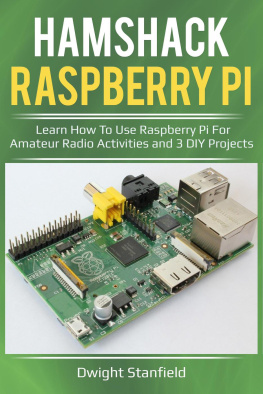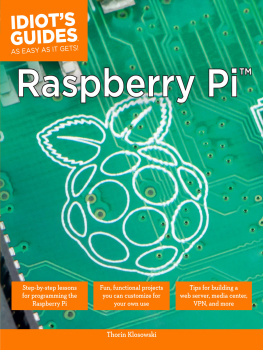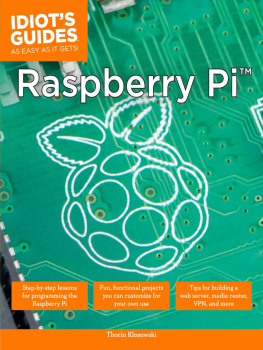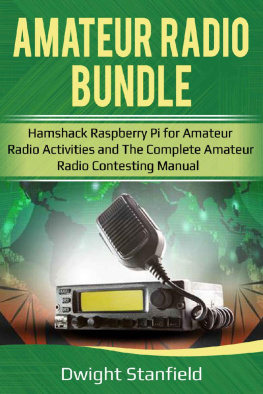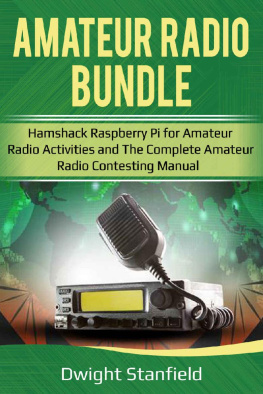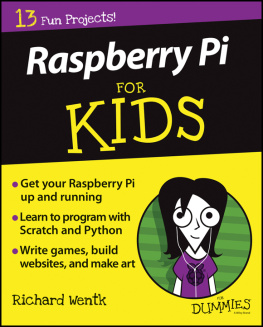Hamshack Raspberry Pi
A Beginners Guide to The Raspberry Pi for Amateur Radio Activities
Jeremy Stephens
2017
Copyright 2017 by Jeremy Stephens
All rights reserved.
This document is geared toward providing exact and reliable information in regard to the topic and issue covered. The publication is sold with the idea that the publisher is not required to render accounting, officially permitted, or otherwise, qualified services. If advice is necessary, legal or professional, a practiced individual in the profession should be ordered.
- From a Declaration of Principles which was accepted and approved equally by a Committee of the American Bar Association and a Committee of Publishers and Associations.
In no way is it legal to reproduce, duplicate, or transmit any part of this document in either electronic means or in printed format. Recording of this publication is strictly prohibited and any storage of this document is not allowed unless with written permission from the publisher. All rights reserved.
The information provided herein is stated to be truthful and consistent, in that any liability, in terms of inattention or otherwise, by any usage or abuse of any policies, processes, or directions contained within is the solitary and utter responsibility of the recipient reader. Under no circumstances will any legal responsibility or blame be held against the publisher for any reparation, damages, or monetary loss due to the information herein, either directly or indirectly.
Respective authors own all copyrights not held by the publisher.
The information herein is offered for informational purposes solely, and is universal as so. The presentation of the information is without contract or any type of guarantee assurance.
The trademarks that are used are without any consent, and the publication of the trademark is without permission or backing by the trademark owner. All trademarks and brands within this book are for clarifying purposes only and are the owned by the owners themselves, not affiliated with this document.
TABLE OF CONTENTS
Introduction
Whether you have already received your Ham license, or plan on receiving one, choosing to read this book is definitely a smart move.
Everything cool that you have ever heard about radio stations such as communicating in Morse code, tracking satellites, or even playing a simple game over the air, this book will teach you in no time.
And the best part? You dont have to spend thousands or even hundreds of dollars to do so. A cheap Raspberry Pi computer and some other inexpensive tools, is all you need to start your amateur radio journey.
And if you think that just because you havent been properly introduced to the tiny computer called Raspberry Pi is a reason to skip reading this book, then you couldnt be more wrong.
From the moment you buy your Pi, to the actual playing with your hamshack RPi, this book will guide you through the whole process of learning to install, configure, and operate with Raspberry Pi in order to enjoy the coolest hobby in the world.
Sounds like a great deal? Now lets play with the airwaves, shall we?
Introducing Raspberry Pi
Raspberry Pi (pronounced raspberry pie) is a tiny computer that has the size of a credit card. Seriously, the Raspberry Pi foundation used an actual credit card to be their template for the design of the printed circuit board (PCB) of this small computer.
Raspberry Pi, or the Pi, or RasPi , or RPi , or whatever nickname you like the most, believe it or not is an actual computer. Its board features the typical hardware that is found in the desktop computers (such as RAM, processor, etc.), which means that this credit card-sized computer also enables you to edit documents, play audio and video, play games, do some coding, etc.
Of course, its tiny size is not able to provide as much power as a normal desktop PC, however, its cheap price of approximately $35 makes up for everything. Actually, the main idea behind the birth of such a computer was to teach kids and adults about the basics of computer science with a minimal investment. Its a lot more convenient to break a Raspberry Pi and replace it with a new one, than learn about the software science with an actual desktop computer and then spend a fortune to replace or fix what youve broken.
Raspberry Pi is as yummy as its sounds. With this tiny computer you can actually move past the visible, surface-level software and dive deeply into its black box the internals that most people are unaware of. Starting the software education with a Raspberry Pi has proven to be the easiest way for people to adopt highly appreciated and super valuable software and hardware engineering skills.
But Raspberry Pi isnt only for these academics. Whats even more amazing about this credit card-like computer is that its fan base is super versatile. There are many DIYers and hackers that make Raspberry Pi an essential part of their computer experiments.
A Quick Ride Through History
For those that are simply casually observing the development of the computer technology, it may seem that Raspberry Pi is brand new. And itd seem like it, since most blogs and websites treat this computer that way. However, the truth is that Raspberry Pi has been around for years. In fact, the creators of the Pi Rob Mullins, Eben Upton, Alan Mycroft, and Jack Lang first came with the idea of making a tiny computer in 2006. This came as a result of their observance that the available cheap computers at that time (such as the Amiga or the Spectrum) had a rather negative effect on the programming education, as they were slowing down the ability to learn the software science significantly. And since laptops and desktop computers cost hundreds, some even thousands of dollars, kids back then really couldnt afford to mess with the main family computer that way. So it is only understandable just how much a cheap learning platform was needed.
Trying to realize their idea, the Pi creators played around with various microcontrollers, PCBs, and breadboards, but it wasnt until 2008 that their concept became a reality thanks to the newer technology and cheaper chips. The new powerful tools helped them create a platform that was not only able to teach command-line programming but also supported media. Joined by David Braben and Pete Lomas, the original creators formed the now-popular Raspberry Pi Foundation, and only three years later, in 2011, the first Raspberry Pi hit the market.
With the rise of technology many different models of Raspberry Pi have been created, each of them offering better features than its ancestors.
The Hardware
If you have already purchased your Raspberry Pi, you may have already noticed how naked the device actually comes. Its price may be cheap, about $35, but there are some hidden costs involved. The Pi may be a computer on its own for sure, however, you need a couple of other things to make it work as it should.
A 5V Power Supply. For a device that is USB-powered, everyone can agree that the Raspberry Pi, no matter which flavor you have, is pretty hungry for power. It draws around 600 to 700 mA. And while it can be powered from the USB port which is rated at around 500 mA, it is important that you use an actual powered adapter. You can use a modern smartphone charger since most of them supply 700 mA at 5V, however, check to see if yours do at the bottom of the charger.
If you dont have a good quality charger, once other devices such as a camera module or a simple Wi-FI dongle are connected, they will draw even more power from the Pi and it may become unstable.
On the other hand, if the power supply doesnt deliver solid 5V, and maybe provides too much power, the board can easily get fried.


